
Blog
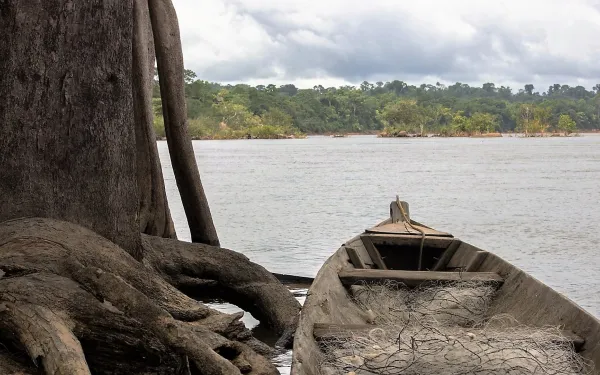
Brazil inaugurated Belo Monte: There’s nothing to celebrate!
The Brazilian government grandly inaugurated the Belo Monte Dam, which sits on the Xingu River in the midst of the Amazon. As an organization that legally represents affected indigenous and riverine communities, as well as residents of the city of Altamira, we consider there to be no reason to celebrate. The dam has been built by overlooking national and international standards that safeguard the environment and human rights. GET TO KNOW MORE about this injustice through the words of our senior attorney María José Veramendi Villa!
Read more
Photo Essay: Life in the shadow of Belo Monte
By Anna Miller, AIDA writer Deep in the Amazon in north Brazil, the world’s third largest dam towers over a once lush jungle landscape. In its far-reaching shadow live the indigenous and riverine communities who have long called the region home. They are people who have lived and grown by the bounty of the forest and the Xingu River. For most, the natural world that surrounds them is inseparable from their definition of home. But that home is changing rapidly. As the Belo Monte Dam begins operations, and its floodgates open, their world is looking and feeling very different. Large stretches of jungle have been flooded, islands completely submerged. The fish are dying, the wildlife scared away. Families have been separated, and entire communities forced from their land. The shadow cast by Belo Monte is long, and it is dark. The lifestyle of the people of the Xingu river basin has been drastically changed without their consent. Their basic human rights have been violated time and time again. The operating company’s attempts at compensation would be laughable, if they weren’t so heartbreaking. The photos that follow depict people and communities who are living amid the volatile realities of this once peaceful patch of rainforest. They are victims of the corruption, violence and abuse that have come to envelop the largest engineering project in Brazil’s history. The Xingu River is dying. Arapujá Island, visible from Altamira, has been completely stripped of life, causing radical change in river currents. Smaller islands where fishermen lived surrounded by fruit trees have been submerged by rising water levels, as the dam’s reservoirs are filled. On one day in January, the Belo Monte dam opened its floodgates without warning; the river is said to have risen more than 20 feet in an hour. Massive amounts of fish have been dying off; locals say Norte Energía even has cleanup crews that bury them, to hide the scale of the daily devastation. Downstream from the dam, the flow of the river at the Big Bend is reducing drastically; the water is becoming muddy and deoxygenated. Communities near and far—from indigenous people to riverine fishermen—are suffering the impacts, as their lives are torn from the river they know so well. As the Xingu dies, they too lose their lives—for the river itself has long been their home, their source of food and livelihood. The construction of Belo Monte has had severe impacts on the natural world, which has long been the primary food source for jungle communities. Tribes who have lived a subsistence lifestyle are finding the river and the jungle they rely on aren’t producing enough, or are too contaminated, to feed their families. Indigenous people have been driven into the nearest city, Altamira, to meet their basic needs. Some go to buy food or go to the doctor; others have succumbed to the struggle and left their village entirely. Many who come to Altamira stay at Casa Do Indio, a house built as a shelter for the recent influx of indigenous peoples. There, they stay in overcrowded rooms, lacking proper sanitation and endangering their health. Far from their homes, stripped of their dignity, they are confronted with the harsh realities of a violent and overcrowded city. As the city closest to Belo Monte, Altamira has undergone drastic changes due to the dam’s construction. Since the project began, the city’s population has grown by nearly 75 percent; 170,000 people are currently living in a city designed for far fewer. Violence has skyrocketed and entire neighborhoods have been destroyed, displacing residents and demolishing longtime family homes. Even neighborhoods Norte Energía claimed would be unaffected by the dam are experiencing its impacts. The rapid growth has wreaked havoc on the city’s sewage system. Belo Monte’s operators have implemented no water or sewage treatment solutions whatsoever, and the entire city is suffering from a lack of basic sanitation. As a result, muddied and flooded streets are widespread. People are demanding answers from Brazil’s Environmental Authority, and from Norte Energía. But they’re left with only questions. The impacts of Belo Monte are not just forcing people from their land; they are tearing people away from each other. As homes are destroyed, and entire villages relocated, the individuals ripped from their lives are struggling to adapt. Communities are losing touch with their traditions; daughters are losing touch with their mothers. Karoline grew up in a rural community surrounded by her family and the rich natural world she remembers so fondly. When her family had to leave their land behind, they didn’t have many options, and were forced to split up. Her parents went to stay with relatives, and Karoline and her sister left for Altamira. Seeking opportunities, education, employment, they too have since parted ways. As a teenager, Karoline is on her own now, far from home. As a requirement of the project’s implementation, Norte Energía must comply with certain conditions, designed to benefit affected communities. They have been implemented in different forms for different situations, none of which could be described as full, adequate or culturally respectful. The Arara da Volta Grande is one of the communities that will be most impacted by Belo Monte. They live on the Big Bend of the Xingu, where the flow of the river has been substantially reduced. To compensate the community for changes to their way of life, Norte Energía is building them “better” houses. Though still within their territory, the structures are located away from the river. They are made of cement and have thick roofs that trap the jungle heat inside each little box. They are a far cry from the wooden, open, thatch-roofed homes traditional to the Arara’s culture and community. Instead of providing the Arara people with a functioning well to provide clean water, Norte Energía has given the community houses they don’t know how to live in; houses that, each and every day, would pull them further away from where they’ve always been. When we talk to members of the indigenous and riverine communities surrounding Belo Monte, we listen to the same answers to many of our questions. The dam is disrupting their way of life. It’s cutting them off from the natural world around them. It’s threatening their culture, their traditional knowledge and the very structure of their communities. Leoncio Arara, a traditional healer from the Arara da Volta Grande, says he now lives in fear. Fear of the dam breaking, of the water rushing down and flooding his home and his community; fear of the fish dying, of the clean water drying up; fear of the dissipation of his culture and the disappearance of his people, who have lived on and with this land for generations. In the once-lush jungle surrounding the massive Belo Monte dam, we see injustice everywhere we look. We see displacement and environmental devastation. What we don’t see is accountability. That’s why we've taken the case to the Inter-American System of Human Rights to have Brazil respond on an international level to the allegations of human rights violations stemming from the construction of the Belo Monte Dam. We’re dedicated to this struggle and we won’t rest until the people we represent, and all those whose lives have been affected by Belo Monte, see justice.
Read more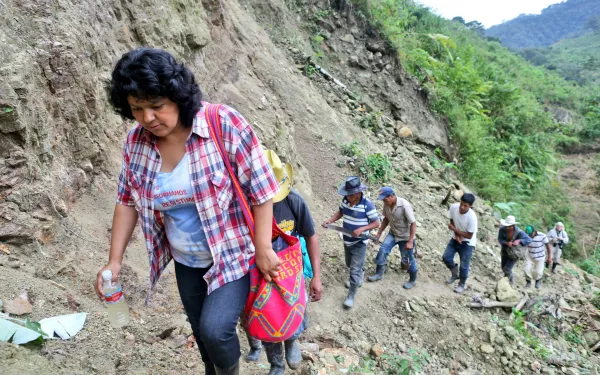
Losing Berta Cáceres: the breaking point in the struggle against impunity
It’s been one month since the assassination of Berta Cáceres, tireless defender of the environment and human rights in Honduras. Her murder quickly gave birth to a global movement calling for justice. It has become a turning point for human rights and environmental defenders and, especially, in the fight for the rights of women and indigenous peoples in Latin America. For that, March 3 will never be forgotten. There aren’t enough words to describe adequately who Berta was, and who she will always be in our memories. She represented what it meant to be a woman, an indigenous person, an environmentalist, a mother, a daughter, a sister, a colleague and a friend. As the BBC said, she’s the Honduran woman who twisted the arm of China and the World Bank; her work led to the withdrawal of their funding for Agua Zarca, the dam Berta was so passionately fighting against. For all that she did, and all that she was, the loss of Berta has severely hurt us all. In a matter of hours, her death caused an unprecedented global outcry. Thousands of organizations, institutions and individuals from around the world have been speaking out against her murder and loudly demanding justice. Point of no return Ironically, the night Berta was murdered, I watched Selma, a film that narrates a key moment in the Civil Rights Movement. Fifty-one years ago, on March 7, 1965, a voting rights march that left Selma toward Montgomery, Alabama was violently repressed. That senseless act of violence became the catalyst for the passage of the Voting Rights Act, which aimed to overcome legal barriers that prevented African Americans from exercising their right to vote. Similarly, we must make Berta’s murder the catalyst that breaks the systematic impunity of cases like this, in Honduras and throughout the region. It’s time to ensure that our indignation, and the demands for justice and investigation made by countless organizations and international authorities, will have an impact. Like Alabama in 1965, Honduras has endured years of systematic human rights violations, linked in large part to infrastructure and mining projects. Just days before her death, Berta and COPINH, the organization she directed, reported threats received for their opposition to the Agua Zarca Dam project. It had been years since the Inter-American Commission on Human Rights first granted precautionary measures to protect Berta’s life, with which the Honduran government failed to comply. After Berta’s murder, on March 5, due to the gravity of the situation the Commission authorized precautionary measures to protect Berta’s family, her colleagues at COPINH, and Gustavo Castro, the sole witness to her death. But days later Néstor García, another member of COPINH, was also assassinated. Then, Gustavo was prevented from returning home to Mexico despite cooperating with the investigation, and despite his ability to continue doing so under the Treaty of Judicial Cooperation between Mexico and Honduras. Members of COPINH and Berta’s relatives continue to report new threats. Many international officials—including the Organization of American States, the Office of the United Nations High Commissioner for Human Rights, UN special rapporteurs, and members of the Congresses of the United States, Costa Rica and the European Union—have also demanded an objective investigation into Berta’s murder. Despite public outcry, little progress has been made thus far, evidenced by the lack of response from the Honduran government and conclusions drawn by an international observation mission. The situation in Honduras reflects the alarming reality of human rights in Latin America, particularly there and in Brazil, Colombia, Mexico and Peru. Multiple reports conclude that the region is under fire. Those who fight to protect their rights, their land, and the environment are risking their freedom, their integrity, and even their lives. Irresponsible businesses and financing Berta’s murder also underscores the responsibility of companies, financial institutions and others involved in the Agua Zarca Dam project. The project’s outright threats to the environment and human rights have been reported for many years. Those threats are the reason the World Bank and Sinohydro pulled out of the project in 2014. The FMO of Holland and Finn Fund of Finland also withdrew their support on March 16, after the assassination of Néstor García. The Central American Bank for Economic Integration (CABEI) froze funding to the project a few days ago. The situation surrounding Berta’s death clearly demonstrates one reason large dams are a bad energy solution—they create severe socioenvironmental impacts. Honduras, like the rest of Latin America, has options to produce energy in ways that truly promote development and reduce poverty. It’s time to learn from the mistakes of the past and move into the 21st century by implementing sustainable energy alternatives. The shocking loss of Berta, the uncertain situation of Gustavo and members of COPINH… it all reminds me of the words of a friend, a journalist who was driven out of his own country for what he wrote. He said that extractive industries, including large dams, are the banana republics of our century. I think he’s right. In Latin America, the uncontrolled extraction of natural resources today is akin to the reign of dictators in the 1960s. We cannot afford to let this happen again. This time will be different. What happened in Honduras must be a watershed moment—a time, finally, to enforce international standards for human rights and the environment. In Berta’s case, there must be an immediate, effective and independent investigation. It should acknowledge the responsibility of the companies involved with Agua Zarca. The hydroelectric project itself should be analyzed to find suitable alternatives. Honduras and all the States involved should implement corrective measures to ensure that what happened to Berta and Néstor does not happen again. Those of us who worked with Berta, who share her passions and principles, will continue to demand justice. Every country in the Americas needs and deserves it.
Read more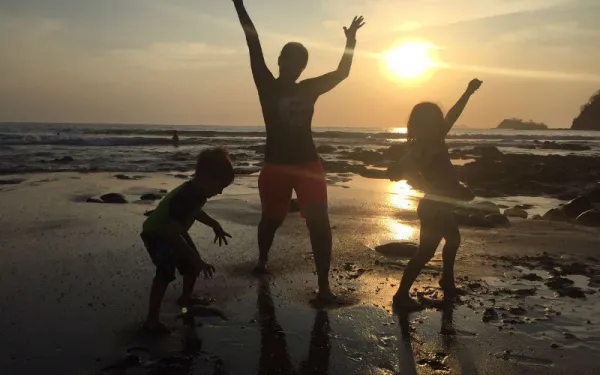
Conserving the shared parts of our oceans
By Gladys Martínez, AIDA senior attorney During Semana Santa, my family and I visited the Las Baulas National Marine Park in Guanacaste, Costa Rica. A clearly committed park ranger there told us about the threats sea turtles face when they spawn on the coast, and of the importance of protecting the beaches and avoiding poorly built development projects. But what most caught my attention was the curiosity of my two children, ages three and five, asking how far the turtles had to swim to lay their eggs. “If they get lost, do the baby turtles not get born?” they asked. For most of us, the answer to their question is a mystery. And from that mystery comes the importance of protecting life in the high seas, those international waters that belong to no country and are therefore part of the global commons. What happens in the high seas, far past what we can see and care for from the coast, motivates the 33 NGOS and 193 delegations of the United Nations currently meeting in New York. Over the course of two weeks, they’re working to create a legally binding agreement that conserves marine life in areas beyond any national jurisdiction. The agreement will be implemented under the United Nations Convention on the Law of the Sea (UNCLOS). AIDA is the only NGO from Latin America that is present at the First Session of the Preparatory Committee, which seeks to create the new treaty within two years. As part of the High Seas Alliance, and with support from the Pew Charitable Trusts, we are working to bring the voice of Latin American civil society to the negotiations. Alongside other member organizations of the High Seas Alliance, we are advocating for the new treaty to include the following principles: Protection and preservation of the marine environment of the high seas. Cooperation between States to conserve the living resources of the high seas. Use of the best available scientific information in decision-making. Good management of high seas resources, guaranteeing them for present and future generations. Implementation of the precautionary principle, according to which the absence of information cannot constitute an excuse for the failure to protect the ecosystems of the high seas. Management based on large-scale planning that takes into account the interrelation of marine biodiversity. Sustainability and equity in reference to the possibility of using resources to meet the needs of present generations, while protecting the needs of future generations. Special attention should be given to the interests of and benefits to developing countries. Good governance (transparency, public participation and access to review procedures and resources). “Polluter pays,” a principle that implies that States causing pollution must take responsibility for it. Compliance with and respect for the commitments made under UNCLOS. Additionally, we consider it of vital importance that States establish marine protected areas, beyond national jurisdictions, to guarantee the conservation of marine biodiversity. At AIDA, we look with great hope and enthusiasm for the commitments of the States during this first leg of the long road ahead. We know that after these two years of negotiations, we will successfully emerge with a treaty that protects the marine biodiversity that belongs to us all—that rich life that lives in the greatest part of our seas. Thank you for supporting us as we continue to work towards this goal!
Read more
Water in Mexico: a human right, bottled
Mexico consumes 12 percent of the global volume of bottled water, highlighting the failures of the country’s water supply system and the violation of a basic human right. Nobody should be denied a glass of water. Serving your guests water is polite; it shows you have good manners and empathy for others. It is also, though not quite as obvious, an issue of human rights. In Mexico’s capital, until only recently, restaurants could deny a glass of water to their customers and require them to drink only bottled water. On one occasion, the owner of a gourmet pizzeria reacted furiously when she saw my boyfriend take out his own water bottle to take a pill. She told him it was prohibited to bring outside food and drink into her restaurant. Then, when we asked for a glass of water, she responded angrily: “We don’t give water away here, we sell it in bottles.” A circular business What you find being sold in supermarkets is not the water, but the bottle. In Mexico, the cost of the extraction and supply of water is relatively low, since almost the entire service is subsidized. According to the highest available rate, a glass of water costs seven cents (.007 Mexican pesos). For a bottle with the same quantity of water, the pizzeria charged $1.50 (28 pesos), seven times the supermarket price. The incident in the pizzeria occurred after the Legislative Assembly of Mexico City required food establishments to provide free glasses of water to customers who ask for it. But even after the legislative provision, I have often had to clarify that I want a glass of water, not a bottle. The waiters often warn me, “It’s filtered water,” reminding me of its unreliability. The dynamic behind this type of business has changed: they now buy large jugs of bottled water or spend money on filters, because in Mexico it’s well known that you never drink water directly from the tap. It’s an unspoken secret, almost popular belief, that tap water is dirty water. It’s common that even those of us who don’t buy bottled water have a filter in our homes. This belief emerged from the 1985 earthquake, when various pipes broke and drinking water mixed with sewage. Later, during a cholera epidemic in the 1990’s, the government promoted chlorinating or boiling the tap water. Yet no authority was responsible for the quality of the pipes through which the drinking water ran; water which, by definition, should be fit for human consumption. In contrast, Chile promotes three reliable water sources: chlorinated, boiled or taken from the tap. In Mexico, the health threat coincided with the arrival of bottled water. What the companies promoted in those early years was confidence and security in the quality of their water. So, little by little, we went from boiling and chlorinating our water, to buying it in 20-liter jugs, to buying small plastic bottles that hold less than 250 ml of water. According to the International Bottled Water Association (IBWA), in 2014 Mexicans consumed 253 liters of bottled water per person. This compares to 94.3 liters per person in Europe (where public drinking fountains are commonplace) and 37 liters per person globally. Mexico consumes 12 percent of the world’s total volume of bottled water. The World Bank cites 80 percent of the Mexican population as distrustful of the water supply system. Bottled water companies, then, have nothing but room to grow, especially considering the majority of the population doesn’t yet consume the recommended two liters of water per day. And a large quantity of bottled water is used on daily tasks such as cooking and washing dishes, even on bathing newborn babies. Can you or can’t you drink tap water? The answer is: It depends. The responsibility for water supply in Mexico is so fractioned that it’s impossible to get a convincing response. In the capital city, water quality is disclosed each year and in only two neighborhoods does it not meet standards for human consumption. Unfortunately, those with the worst water quality also have the lowest standard of living. Information on the subject doesn’t arrive to our homes, it’s difficult to access and – in some cases – the information is non-existent, hidden or disguised. No government authority is responsible for water quality: not the National Water Commission, not state or city governments. Violating a human right Without convincing responses about the reliability of the water supply system, Mexicans are opting to buy bottled water. By doing so, we’re demonstrating that something is wrong with the country’s water system, and the human right to water is not guaranteed. According to the UN, drinking water must be safe, clean accessible and affordable for all. The human right to water was included in the Mexican Constitution four years ago, but its implementation, and the party responsible for guaranteeing it, remains under discussion. While the debate continues, millions of Mexicans are, understandably, buying bottled water to protect their health. The lack of information about or accountability for the water supply system makes the guarantee of this human right nothing more than a dream. The UN established that people shouldn’t spend more than three percent of their income on water services. In Mexico, only those with incomes greater than $1,200 a month (21,000 pesos) spend three percent or less of their income on bottled water. The other 80 percent of households in the country spend as much as eight percent, a staggering figure, especially considering it doesn’t include what they pay for water used for other domestic activities. People are buying bottled water because they don’t trust the country’s water supply system. By denying a glass of water to its population, the Mexican government is denying a fundamental human right.
Read more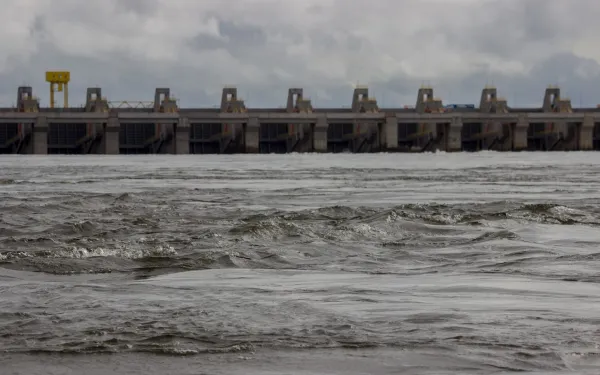
Belo Monte: the river may be dying but the search for justice never will
“The river is dead!” exclaimed Raimundo as we navigated in his motorboat from Altamira toward the big bend of the Xingu River. From my perch in Raimundo’s boat, it was easy to see how bleak the landscape surrounding Altamira—the northern Brazilian city closest to the construction of the Belo Monte Dam—has become. The big island of Arapujá, located across from Altamira, has been completely deforested, causing a radical change in the currents of the river. Many of the smaller islands, previously inhabited by fishermen, are now completely submerged, only the tops of trees visible above the rising water. I visited Altamira, and the indigenous and riverine communities nearby, with colleagues from Justiça Global. We came to update our case, and to inform those affected by Belo Monte of a new hope for justice: in December, the Inter-American Commission on Human Rights opened the case against Brazil for human rights violations caused by the dam. In January, Norte Energía, the company charged with the construction and operation of Belo Monte, opened the dam’s floodgates without warning communities living downstream. They say the Xingu grew seven meters in just an hour. In some communities, the rising water flooded their riverside land, taking with it canoes, boats and items of clothing. Destroying lives The boat took us to a spot in the river where a large island once stood with a house in the middle. Raimundo Nonato had lived there. He raised animals and dedicated his life to fishing. It had been the perfect place to bathe in the river. It was there, in 2013, that Antonia Melo, leader of Movimento Xingu Vivo Para Siempre, baptized me as a defender of these waters. Now the island is under water, and all that remains to be seen are the tops of some fruit trees. Leoncio Arara, an indigenous man from the community Arara da Volta Grande, says his community lives in fear of the river’s expected growth, the loss of their culture and way of life, and from the recent death of 16 tons of fish. They have seen cracks in the dike of the dam’s bypass channel and fear it will break, as the Fundão mining waste dam did in Minas Gerais. On our tour of the area, we also noticed discolored patches on the dike, which should certainly be a sign of alarm. Leoncio said the fear keeps him up at night. On the indigenous lands of the Arara da Volta Grande and Paquiçamba, the life of inhabitants has changed radically. They must now travel to the city (Altamira) to sell their harvest and to buy food. The changing environment has drastrically reduced opportunities for fishing and hunting, rendering their traditional subsistence lifestyle inadequate. Leoncio says that his peoples’ traditional knowledge and community life are being lost. Their homes are different, as is the formation of their village. Norte Energía has carelessly constructed houses that conflict with their culture, because of the location and materials used. Their community lacks even a well from which to retrieve drinking water, a condition that should have been met more than five years ago. Pain, injustice and struggle On our trip, we spent nine days in the area around the Belo Monte dam. We listened to so many stories of pain and injustice: of indigenous children that died from bad medical care in villages without access to the city; of indigenous people who left their villages to seek shelter in the city and now live in the overcrowded Casa del Indio, surrounded by filth and, often, conflicting ethnic groups. We relived the stories of tireless struggle, like that of Socorro Arara, an indigenous woman whose home was destroyed, along with those of her relatives. Socorro and her family all had to haggle with the company, as if their basic human rights were negotiable. Some received very little money in compensation, others the option of a prefabricated house in a neighborhood far from the river. Socorro’s parents live in one of those neighborhoods. Behind their new cement house, they built a small home with the wood they were able to save from their destroyed home. It is there that they really live, by the light of small kerosene lamps, sleeping in hammocks. Electricity is not part of their lives. Residents of Altamira live surrounded by the ironies of the third largest dam in the world. On February 28, Altamira and various cities in the state of Para were left without electricity. The cutoff, described by the receptionist at our hotel as routine, was due to testing on one of the dam’s turbines. There’s not much time now until the Belo Monte begins operation. If, for the countries of the region, Belo Monte represents the cherished dream of development, for me it represents a nightmare from which I’m dying to awake. It’s a nightmare of pain and human rights violations, in which a beautiful, living river is quickly fading away. Going with it are the lives and the dreams of those who have long depended upon its clean and healthy waters. Human rights are not negotiable. The victims of Belo Monte need justice now! It is that dream of justice that I hope, one day soon, becomes reality. -- I wrote these lines in honor of all the people who have dedicated their lives to defending our rivers and our life.
Read more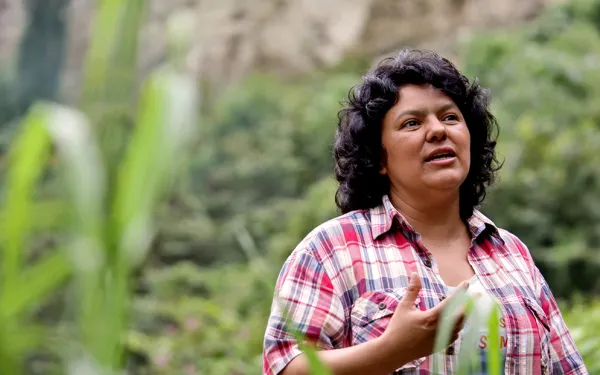
Remembering Berta Cáceres before the Green Climate Fund
On March 3, Berta Cáceres, an indigenous rights defender in Honduras, was assassinated. As a leader of COPINH, Berta was fighting against the implementation of an internationally funded large dam project. She was fighting for the health of the Gualarque River, and for the lives and livelihoods of the indigenous communities that depend upon it. Her death is a glimpse at the real life impacts that megaprojects may have. That’s why, at the closing of the 12th Meeting of the Board of the Green Climate Fund, I presented a message to the Board on behalf of the civil society organizations monitoring the development and decision making process of the mechanism. The message was intended as a reminder of the care with which financing decisions must be made, as the board prepares to review and approve more projects: “We would like to ask for a moment to remember Berta Cáceres, the indigenous environmental justice and human rights defender brutally murdered last week in Honduras. She was leading a fight against an internationally financed large dam that threatened her water, her land, and her people. We would like to ask all of you to do whatever you can to secure justice for Berta, and the immediate safe return of Gustavo Castro, head of Friends of the Earth Mexico, who was injured during the assassination and whose life is now in danger. Berta’s murder serves as a tragic reminder to the GCF of the incredible risks faced by rights defenders, and the deep need to safeguard their rights and the rights of the people and land they fight for. The GCF must not support questionable projects like the one that claimed her life and must obtain in all of its projects and programmes the free, prior and informed consent of people and communities to protect their livelihoods and survival.”
Read more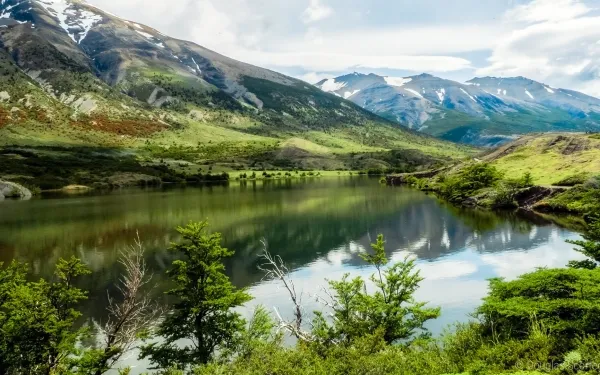
The Invaluable Legacy of Douglas Tompkins
By Florencia Ortúzar, AIDA attorney On December 8th, one of the last pristine places on the planet, Patagonia, lost one of its greatest protectors, Douglas Tompkins. At 72 years old, the conservationist and multimillionaire lost his life in a kayaking accident. Much has been said about the eccentric man who sold the companies that made him rich, and left it all behind to undertake an ambitious conservation project in Chile and Argentina. It was looked on with suspicion when he began frantically buying lands in the Southern Cone for the sole purpose of protecting them. Tompkins thought that effective conservation should be “extensive, wild and connected.” So he decided to create large national parks that would be protected even in his absence. To do so, he acquired large tracts of land and began returning them to their natural state, removing fences and recuperating ecosystems. Without fences, wildlife could move freely, a condition which is fundamental for their prosperity. Donating in exchange for protection Barely more than a month after she was widowed, Kris Tompkins, Doug’s wife for 20 years, met with Chilean President Michelle Bachelet to offer the donation of more than 400 thousand hectares of land in Chilean Patagonia, including millions of dollars in infrastructure. With it, she sought to realize the last of the couple’s major projects in Chile: the creation of Patagonia Park, which together with other lands, donated or in process of being donated, would form a network of parks in Patagonia. In Chile, the Tompkins had already donated land for the creation of Corcovado Park in Patagonia and Yendegaia Park in Tierra del Fuego. The land to create Pumalín Park, also in Patagonia, is in the process of being donated. All together, these land donations equal more than 500 thousand hectares of protected wilderness. But the Tompkins’ gifts come with conditions: for each hectare they receive, governments must protect a certain number more. In exchange for the posthumous donation in Chile, for example, the government is required to create new national parks, expand existing parks and reclassify four natural reserves. Negotiations are expected to conclude in 2018. If the Tompkins’ succeed, the agreement will create the most important network of national parks in the country. Protection in Argentina Tompkins also donated vast stretches of land in Argentina. In the Entre Ríos Province, he started a soil recuperation project, using highly diversified organic crops to overcome the damage of industrial monoculture. The Argentine Patagonia also received protection, through land donations of 66 thousand hectares to Monte Leon National Park and 15 thousand hectares to Perito Moreno National Park. Tompkins’ last project in Argentina was completed last December when the Argentine government met with Kris Tompkins to accept the donation of 150 thousand hectares of land in the Estuaries of Iberá, the second largest wetland on the planet. This area, when added to the 50 thousand hectares previously donated and the 500 thousand that already form Iberá Park, will create one of the largest reserves in the country. ¡Patagonia sin Represas! In addition to contributing to the creation of national parks, Tompkins supported the activism of conservation groups in Patagonia. One of the initiatives he sponsored was the campaign Patagonia sin Represas, which managed to stop the HidroAysén project in its tracks. HydroAysén had aimed to construct five mega-dams on the Baker and Pascua rivers, two of the largest free-flowing rivers in Chile, located in the heart of Patagonia. During Doug’s burial the mantra “Patagonia sin Represas” is said to have been shouted by mourners when the last handful of dirt was thrown upon his grave. At the end of the 1900s, when Tompkins’ land purchasing in Argentina and Chile was at its peak, he was accused of buying the land cheaply and displacing its inhabitants, leaving them without work. Later, the accusations became more sophisticated: they accused him of buying land to create a new Zionist state, of being a CIA spy, and of trying to seize enormous reserves of fresh water to export to places experiencing drought. Many looked upon his work with suspicion. Maybe they found it difficult to believe that someone would invest millions of dollars with the sole objective of preserving the perfect natural harmony that surrounds us. Any accusation was easier than giving credit to his true intention: buying land to prevent it from being exploited, and then giving it back to the government, not for money, but for a commitment of protection. Whatever his detractors may say, here in reality, Douglas Tompkins left an enormous legacy to all of mankind. He has conserved more land than any other person in the history of Chile and Argentina. His work has translated into massive patches of green on the maps of Patagonia. For those pristine and wild places, we are eternally grateful. CONGRATULATIONS DOUG, and THANK YOU!
Read more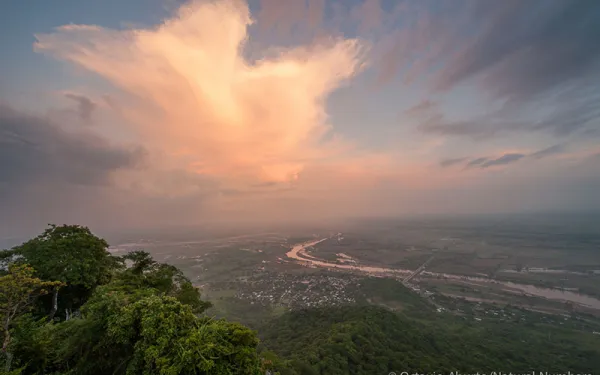
Worth Protecting: Mexico’s Marismas Nacionales
By Anna Miller, AIDA writer On Mexico’s northern Pacific coast, verdant mangroves reach their roots into the shallow soil, drink up the sweet, fresh water flowing from the mountains, and shelter the diverse, abundant life teeming below. Crabs crawl along the muddy ground, fish zig and zag along the root systems, crocodiles wait patiently in the shallows, and sea turtles feed on their way to coastal nesting grounds. This living, breathing community, extending 2,000 square kilometers through Nayarit and Sinaloa states, is the largest mangrove forest on Mexico’s Pacific coast. Despite the importance of this rich environment, the Marismas Nacionales are at risk. Their health and vitality are threatened by the proposed Las Cruces hydropower project, which would dam the Río San Pedro Mezquital, the last free-flowing river in the Sierra Madre Mountains. After the senseless destruction of the Tajamar mangroves in Cancún, Mexico must now, more than ever, live up to its responsibility to preserve vital wetlands like Marismas Nacionales. There is so much worth protecting. The San Pedro Mezquital River is born in the highest peaks of the Sierra Madre, flowing through dense green forests and across valleys before reaching the coastal plains of Nayarit, where its fresh waters feed Marismas Nacionales. Altering the natural flow of the river would increase sedimentation in the wetlands and risk suffocating the sensitive system. The vast coastal wetlands along the Gulf of California are home to as many as 20 percent of Mexico’s mangroves. A sort of biological super system harbors a diverse array fish and birds and insects and amphibians. The Marismas Nacionales are believed to constitute one of the most productive environments in Northwest Mexico. Coastal communities also live in harmony with Marismas Nacionales and depend upon the wetlands for their survival. The coastal marine environment provides a sustainable livelihood for local populations, who fish and harvest shellfish. The communities are therefore linked with the health and wellbeing of the wetlands. An avian paradise, the Marismas Nacionales are home to more than 250 species of birds, nearly half of which are migratory. The Marismas provide a critical wintering habitat for birds from the Pacific coastal region: in parts of the year, 80 percent of Pacific migratory shorebirds take shelter there. Many local species also seek out the mangroves as shelter from surrounding areas during particularly harsh weather. Without a healthy river, the life in these vast mangrove forests and coastal lagoons may be lost for good. With the construction of Las Cruces Dam, Mexico is putting at risk another of its sacred natural places. AIDA is committed to protecting Marismas Nacionales, and the health and way of life of all the living things that depend on them. We hope you’re with us. Learn about our work to stop Las Cruces Dam
Read more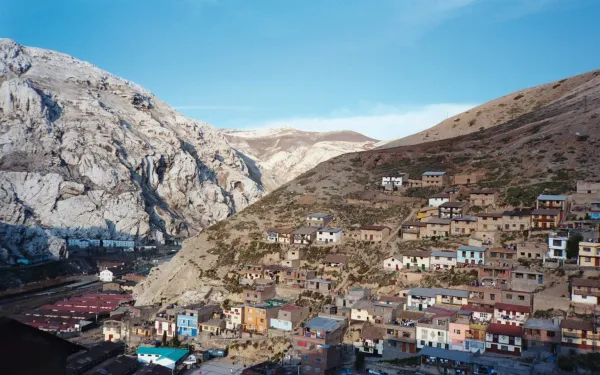
My first visit to La Oroya
By Rodrigo da Costa Sales, AIDA attorney “What do you think of La Oroya?” a local resident asked me the first time we met. Honestly, I wasn’t quite sure how to respond. Quickly sensing my discomfort, he joked, “It’s very beautiful, there’s so much biodiversity, and the sky is so blue...” Relieved, I laughed along with him and, since that moment, I’ve been searching for the words to describe La Oroya. La Oroya is a city of 33,000 people on the Mantaro River in central Peru, at an altitude of nearly 5,000 meters. This was my first time there, and I stayed only two days. The trip from Lima takes five hours, winding along painfully curvy roads with breathtaking views of the mountains all around. In La Oroya, however, the landscape changes drastically. The city is covered in a sheet of grey, with little to no natural life, streets full of trucks transporting iron and other heavy metals... and not much else of note. My greatest wish for my time in La Oroya was to meet the people we are representing in our case before the Inter-American Commission on Human Rights. After working on it for six months, I wanted finally to put faces to the names I had come to know so well on paper. Our meeting was scheduled for the evening, when residents could find time free from work and family commitments. There, we introduced them to students from Yale University, who were developing an important report on the relationship between La Oroya’s air quality and the health of city residents. Although interested in the study, and happy to hear about it, residents quickly peppered us with questions about the case. The main thing they wanted to know—an answer they have been waiting for since our petition was filed seven years ago—was when the Commission will make its decision. They explained the many offensive comments they’ve had to endure, both from workers at the metal-smelting complex and from their own neighbors, during the long wait for a ruling. They’ve suffered threats from fellow residents of La Oroya, who wrongfully believe that the purpose of the case is to close the complex, which would leave many people without jobs. In one especially disturbing instance, a “doctor” spoke on television claiming that lead contamination does not cause any health problems. He claimed the residents of La Oroya as proof that, while contaminated by lead and other heavy metals, people could still lead normal lives. We reminded them that a process before an international organism involves years of waiting, and that we sympathized with them for everything they had been through in the past few years. But the truth is that I felt such intense frustration. It was the first time that I saw, up close, such personal desire for an international decision. I understood then that a decision on paper could actually constitute a form of reparation. The long-awaited Commission report will show the world that the effects of heavy-metal pollution on a population actually violate their personal integrity and right to health. The goal of this case is not to close the metallurgical complex, but instead to force the adoption of measures that guarantee a certain quality of life for the residents of La Oroya. The Commission’s report will be the instrument in this case by which international and human rights law becomes real, effective and transformative. I returned from La Oroya almost a week ago, and I’m still searching for the words to describe such a place. Truthfully, La Oroya didn’t seem very nice at first. But I quickly came to realize that the beauty of a place comes not only from its natural and man-made attractions; it comes also, and perhaps more importantly, from the beauty of its people. In that sense, I’ve never seen a city quite as beautiful as La Oroya. This blog is dedicated all the victims of the case in La Oroya. I hope that they will achieve justice, and that because of them, a case like this is never repeated around the world. It is also dedicated to Astrid Puentes and Maria José, AIDA’s attorneys in charge of the La Oroya case, who inspire me daily to work for a more just world.
Read more